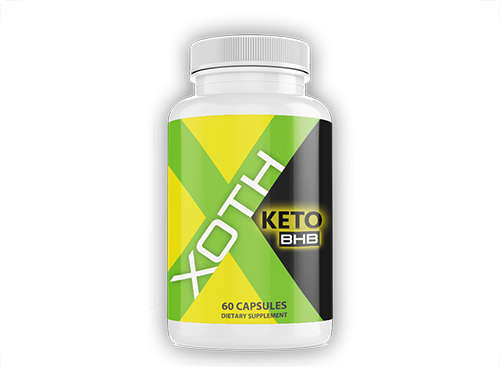Daily Requirements and Optimal Sources
Introduction
The ketogenic diet, or keto diet, has gained immense popularity in recent years for its potential to aid in weight loss and improve overall health. Central to the success of the keto diet are its macros, or macronutrients. In this article, we will delve into what keto macros are, how many you need each day, and the best way to obtain them to effectively maintain a state of ketosis.
What Are Keto Macros?
Keto macros are macronutrients specifically tailored to the ketogenic diet. They consist of three primary components: fat, protein, and carbohydrates. Unlike traditional diets that emphasize balanced intake of these macronutrients, the keto diet modifies the ratio of these macros to induce a metabolic state called ketosis.
- Fat: Fat is the cornerstone of the keto diet, constituting the majority of daily caloric intake. Dietary fats are broken down into fatty acids, which become the body’s primary source of energy in ketosis. Healthy fat sources in the keto diet include avocados, olive oil, coconut oil, nuts, and fatty cuts of meat.
- Protein: Protein intake on the keto diet is moderate and helps maintain muscle mass while promoting satiety. High-quality sources of protein include lean meats, poultry, fish, and eggs. Consuming adequate protein is crucial, as an excessive intake may potentially disrupt ketosis.
- Carbohydrates: In the keto diet, carbohydrates are kept to a minimum to ensure the body relies on fats for energy. This restriction on carbohydrates often limits daily intake to 20-50 grams of net carbs, depending on an individual’s tolerance. Non-starchy vegetables, such as leafy greens and cruciferous vegetables, are preferred sources of carbohydrates.
How Many Keto Macros Do You Need Each Day?
The ideal ratio of keto macros for an individual can vary based on factors such as age, gender, activity level, and specific goals. However, a commonly recommended macro distribution is known as the “70-20-10” rule, where 70% of daily calories come from fat, 20% from protein, and 10% from carbohydrates.
- Fat: On a typical 2,000-calorie per day keto diet, this translates to around 144-160 grams of fat daily. It’s essential to focus on healthy fats and avoid trans fats or excessive saturated fats.
- Protein: With a 20% distribution, protein intake ranges from 80 to 100 grams daily for a 2,000-calorie diet. It is crucial not to overconsume protein, as excess can be converted into glucose, potentially disrupting ketosis.
- Carbohydrates: Carbohydrate intake is limited to 20-50 grams daily for most people. The goal is to focus on fiber-rich, non-starchy vegetables that provide essential nutrients without spiking blood sugar levels.
It’s worth noting that these recommendations are a general guideline, and individual requirements may vary. Some people may thrive on a slightly different macro distribution, which can be determined through trial and error.
The Best Way to Obtain Keto Macros
Now that we understand the importance of keto macros and how much of each we should consume daily, let’s explore the best sources to obtain these macros effectively while adhering to the ketogenic diet.
- Optimal Sources of Fats:
- Avocados: Avocados are rich in heart-healthy monounsaturated fats and provide essential vitamins and minerals.
- Olive Oil: Extra virgin olive oil is a staple in the Mediterranean diet and offers a healthy source of fats.
- Coconut Oil: Coconut oil is renowned for its medium-chain triglycerides (MCTs), which are readily converted into ketones for energy.
- Nuts and Seeds: Almonds, walnuts, and flaxseeds are excellent sources of fats, along with fiber and antioxidants.
- Fatty Fish: Salmon, mackerel, and sardines are loaded with omega-3 fatty acids, supporting both heart and brain health.
- High-Quality Protein Sources:
- Grass-Fed Beef: It contains a better balance of omega-3 to omega-6 fatty acids and is a rich source of protein.
- Free-Range Poultry: Skinless chicken and turkey breasts provide lean protein with minimal fat content.
- Fatty Fish: These fish also serve as excellent protein sources in addition to their healthy fat content.
- Eggs: Eggs are a versatile source of protein and healthy fats, as well as a host of essential nutrients.
- Low-Carb, Fiber-Rich Vegetables:
- Leafy Greens: Spinach, kale, and Swiss chard are low in carbs, high in fiber, and packed with vitamins and minerals.
- Broccoli and Cauliflower: These cruciferous vegetables are versatile and low in carbs, making them keto-friendly.
- Zucchini: Zucchini can be spiralized to create a low-carb alternative to pasta.
- Keto-Friendly Snacks and Supplements:
- MCT Oil: MCT oil can be added to coffee or shakes to boost ketone production.
- Nuts and Seeds: As long as portion sizes are controlled, they can serve as convenient keto snacks.
- Cheese: Hard cheeses like cheddar, mozzarella, and Swiss are low in carbs and high in fat and protein.
- Keto Bars: Some companies produce keto-friendly protein bars that can be useful for on-the-go snacks.
Conclusion
Keto macros are the fundamental building blocks of the ketogenic diet. To achieve and maintain ketosis, it’s essential to maintain an appropriate balance of fat, protein, and carbohydrate intake. The “70-20-10” guideline offers a useful starting point for most individuals, but personalization may be necessary to optimize results.
Obtaining the right macros on a keto diet involves selecting high-quality sources of fat, protein, and low-carb vegetables. These choices not only support ketosis but also contribute to a keto diet can be a sustainable and effective way to reach your health and fitness goals.



